Suriname is often called the Best Kept Secret of South America—and with fewer than 300,000 international tourists per year, it’s one of the least-visited countries on the continent.
Given its high safety rating and multicultural footprint, it’s hard to see why more people haven’t made the trek once you dig deeper into this country.
Tucked between Guyana, Brazil, and French Guiana on the Atlantic coast, Suriname is the only Dutch-speaking nation in South America.
That colonial legacy, layered over Indigenous roots and African, Indian, Javanese, Chinese, and European migration, makes the country feel more like the Caribbean than the Andes.
Originally inhabited by Indigenous peoples, Suriname became a Dutch colony in the 17th century and remained so until gaining independence in 1975.
The Dutch brought enslaved Africans to work on plantations, and after emancipation, indentured workers arrived from India, Indonesia, and China.
This complex history created one of the most multicultural societies in the world.
Today, that diversity shows up in everyday life.
Paramaribo’s skyline includes Hindu temples, Islamic mosques, Christian churches, and synagogues—sometimes on the same street.
The food scene blends roti, nasi goreng, pom, and creole stews with Dutch pastries and street snacks like bara.
Music ranges from kaseko to kawina to Bollywood soundtracks.
And the people, despite Suriname’s political ups and downs, remain deeply proud of their shared identity.
Suriname isn’t polished, and it doesn’t try to be.
But for travelers seeking a culturally rich, ecologically wild, and still largely undiscovered destination, it offers something rare: authenticity without the crowds.
It’s a place where rainforest meets rhythm, and heritage is woven into daily life.
Warnings & Dangers in Suriname

OVERALL RISK: MEDIUM
While most visits to Suriname are trouble-free, travelers should be aware of a medium overall risk due to limited infrastructure outside urban areas and occasional petty crime. It’s a country where planning pays off, especially if venturing into the interior or relying on local services. Those who are prepared for the urban and remote risks will find it to be a low concern.

TRANSPORT & TAXIS RISK: MEDIUM
Transport in Suriname carries a medium risk. Driving is chaotic, signage is limited, and road conditions outside cities can be poor. Taxis are unregulated—many aren’t metered—so negotiate fares in advance or use vetted drivers through hotels when possible.

PICKPOCKETS RISK: MEDIUM
Expect busy markets and districts to be prime picks for thieves in Paramaribo. Those who are used to dealing with this won't notice anything out of the ordinary, but you can't let your guard down. Treat it as a medium risk.

NATURAL DISASTERS RISK: LOW
The risk of natural disasters in Suriname is low. It lies outside the hurricane belt and doesn’t experience major seismic activity. Flooding during the rainy season is the main concern, especially in low-lying neighborhoods and during river-based travel.

MUGGING RISK: MEDIUM
Muggings do happen in Paramaribo after dark, particularly in less-trafficked neighborhoods. The risk here is medium, mostly avoidable by using caution, avoiding walking alone at night, and not displaying valuables. Outside the capital, this risk drops considerably.

TERRORISM RISK: LOW
Suriname has a low terrorism risk, with no history of attacks and no current credible threats. It’s not a hotspot for international tensions, and no known extremist groups are operating within the country.

SCAMS RISK: MEDIUM
Scams targeting tourists tend to be low-level and situational but still pose a medium risk, particularly in the form of overcharging, fake tour operators, or dodgy taxi drivers. Confirm prices in advance, and vet any tour company you're considering. It's worth the due diligence and higher price tag for a safe excursion.

WOMEN TRAVELERS RISK: MEDIUM
Solo female travelers generally report positive experiences, but the risk is medium, especially at night or in remote areas. Unwanted attention can happen, and women should be cautious about alcohol intake and consider local dress norms outside Paramaribo.

TAP WATER RISK: MEDIUM
Tap water quality varies, making the risk medium. In Paramaribo, it’s generally treated and safe to drink, but elsewhere, bottled water is a safer bet. If you’re headed into the jungle, purification tablets or filters are essential.
Safest Places to Visit in Suriname
The Suriname Tourism Board runs the website surinametourism.sr.
This website is more than convenient.
It also ensures that you book tours with legitimate companies.
Suriname is compact but surprisingly diverse, offering visitors a mix of colonial history, cultural heritage, and dense rainforest exploration.
Paramaribo, the capital, is a UNESCO World Heritage Site known for its wooden Dutch colonial buildings and blend of religions visible in places like the mosque and synagogue standing side by side.
The city is also home to the Surinaams Museum at Fort Zeelandia, which covers centuries of local history, from Indigenous life to Dutch colonization and the legacy of slavery.
Outside the capital, Suriname becomes less about architecture and more about nature.
Brownsberg Nature Park offers sweeping views of the Brokopondo Reservoir and trails through rainforests rich with wildlife.
The Central Suriname Nature Reserve, another UNESCO site, spans nearly four million acres and includes waterfalls, rivers, and rare species like the Guiana cock-of-the-rock.
Multi-day excursions take travelers into the interior via boat and bush plane to reach Maroon and Indigenous villages, where visitors can learn about traditional practices and community life.
Along the coast, the beaches of Galibi are nesting grounds for endangered sea turtles.
River systems like the Coppename and Suriname Rivers provide options for jungle boat tours, fishing, and birdwatching.
If you’re interested in gold mining history or ecotourism, Albina and the border area near French Guiana offer another layer of contrast.
Places to Avoid in Suriname
Despite a pretty strong overall safety rating, there are some areas to avoid and activities to think twice about in Suriname.
First, once you’re outside Paramaribo, you’re unlikely to find any law enforcement.
At the same time, within the city, there are common crime hot spots.
These include business districts, shopping areas, and areas around busy hotels.
You want to steer clear of Palm Garden, aka Palmentuin, in the Dutch area of Paramaribo due to high levels of criminal and shady activities. It’s especially important to avoid that area after dark.
Robberies are a concern in Albina, Moengo, the Brokonpondo District, on the East-West Highway between Paramaribo and Albina, and along the Afobakka Highway in Para district.
The border with Guyana is also a spot to avoid since there are gangs there in a lawless environment.
Safety Tips for Traveling to Suriname
- The national police can be reached by dialing 115, but response times vary. In Paramaribo, there’s a stronger presence, including a Tourism Police Unit that handles visitor issues. Outside the capital, law enforcement is scarce, and coverage is limited. In the interior, help could be hours—or even days—away.
- There’s no official emergency alert system, so it’s on you to stay informed. Local SIM cards from Telesur or Digicel work best for signal coverage. International roaming is spotty and expensive. Buy a SIM card upon arrival if you plan on traveling outside Paramaribo or using local services.
- You can drive with an international driving permit or a foreign license plus a local validation (obtainable through police or car rental agencies). But unless you’re used to left-hand driving, rough roads, and minimal signage, it’s not for the faint of heart. City traffic is hectic; rural roads are often unpaved.
- Well-established companies are usually registered with the Suriname Tourism Foundation. Ask for proof of registration and check reviews from recent travelers—TripAdvisor and Facebook are more reliable than company websites. Don’t book multi-day trips with someone who just approaches you in the street.
- The U.S. government advises against using your regular credit or debit cards due to fraud risks and limited security infrastructure. Prepaid cards are a safer bet, especially outside major hotels or restaurants. ATMs aren’t always reliable, and card skimming has been reported.
- Suriname requires proof of yellow fever vaccination if you’re coming from (or traveling through) a country with a risk of transmission. Some destinations you visit after Suriname—like Brazil—will ask for proof if you’ve been in Suriname, so plan ahead. The shot must be taken at least 10 days before travel.
- Mosquito-borne illnesses like dengue, Zika, and chikungunya are present, and malaria is a concern in the interior. Pack strong insect repellent and long sleeves, and consider anti-malarial medication if you’re going deep into the jungle. Hepatitis A and typhoid vaccines are also worth getting before your trip.
- Biking is common but chaotic. Traffic rules are loosely followed, and sidewalks are almost nonexistent. You’ll often be sharing the road with fast-moving cars that don’t give space. If you rent a bike, use it in safer, low-traffic areas—not as your main mode of transportation.
- Once you’re in the rainforest, you’re really in it. Guides are essential—not optional. Bring a satellite phone if you’re going remote, and always tell someone where you’re headed. Water purification tablets, a first-aid kit, and extra mosquito netting are musts. Don’t rely on GPS—it often fails in dense forests.
- Dress conservatively outside Paramaribo, especially in Maroon or Indigenous communities. You want to do your best to avoid standing out as a tourist, as they can too often be the target of criminals.
So... How Safe Is Suriname Really?
Most governments have advisory rating systems, ranging from one to four, that detail how risky a country is to visit.
For Suriname, the United States, Canada, and Australia rank it as Level 1: Exercise Standard Precautions.
That’s the lowest level possible, but it doesn’t mean there aren’t risks there.
Petty and violent crimes are more likely in Paramaribo.
Even the areas designed for tourists aren’t without risk.
I recommend reading the travel advisories before your trip, especially those from Canada.
They offer the most detailed information.
It’s also worth mentioning that a jaguar attacked a tourist in early 2025.
He survived, but the photos of the wounds are gnarly.
All of this is to say that whether you’re near man or beast, it’s worth exercising extra caution and knowing the risks before you go.
This will help you better prepare and enjoy what you experience in Suriname.
How Does Suriname Compare?
| Country | Safety Index |
|---|---|
| Suriname | 62 |
| Djibouti | 38 |
| Croatia | 83 |
| Mexico | 65 |
| France | 64 |
| Puerto Rico | 34 |
| Somalia | 16 |
| United Kingdom | 77 |
| Peru | 50 |
Useful Information

Visas
Most travelers need a tourist card or e-visa to enter Suriname. U.S., Canadian, and EU citizens must apply online before arrival. The process is generally easy, but double-check requirements as they can change. Make sure your passport is valid for at least six months past your entry date.

Currency
Suriname uses the Surinamese dollar (SRD). U.S. dollars and euros are sometimes accepted in major hotels or businesses, but you’ll need local cash for most purchases. ATMs are available but can be unreliable outside of Paramaribo. Exchange money at banks or authorized vendors—not on the street.

Weather
Suriname is tropical and humid year-round, with temperatures usually in the high 80s°F (30°C). There are two rainy seasons: May to August and November to February. Pack for humidity, rain, and heat. The dry season—February to April or August to November—is best for travel and jungle excursions.

Airports
Johan Adolf Pengel International Airport (PBM) is the country’s main international gateway, about an hour from Paramaribo. Flights mostly arrive from the Caribbean, South America, and the Netherlands. The airport is small but functional. Don’t expect many amenities, and plan ahead for transport to the city.

Travel Insurance
Travel insurance is strongly recommended, especially if you're exploring Suriname’s remote interior. Medical facilities outside Paramaribo are limited, and evacuation can be costly. Coverage should include health, theft, and trip cancellation. Make sure jungle tours or river travel are covered if those are on your itinerary. That might require adventure insurance, and you'll likely have to waive liability for the tour operation before you take the trip.
Suriname Weather Averages (Temperatures)
Average High/Low Temperature
| Temperature / Month | Jan | Feb | Mar | Apr | May | Jun | Jul | Aug | Sep | Oct | Nov | Dec |
|---|---|---|---|---|---|---|---|---|---|---|---|---|
| High °C |
30 | 30 | 31 | 31 | 30 | 29 | 30 | 32 | 33 | 33 | 32 | 31 |
| Low °C |
23 | 23 | 23 | 24 | 24 | 24 | 24 | 24 | 24 | 24 | 24 | 23 |
| High °F |
86 | 86 | 88 | 88 | 86 | 84 | 86 | 90 | 91 | 91 | 90 | 88 |
| Low °F |
73 | 73 | 73 | 75 | 75 | 75 | 75 | 75 | 75 | 75 | 75 | 73 |
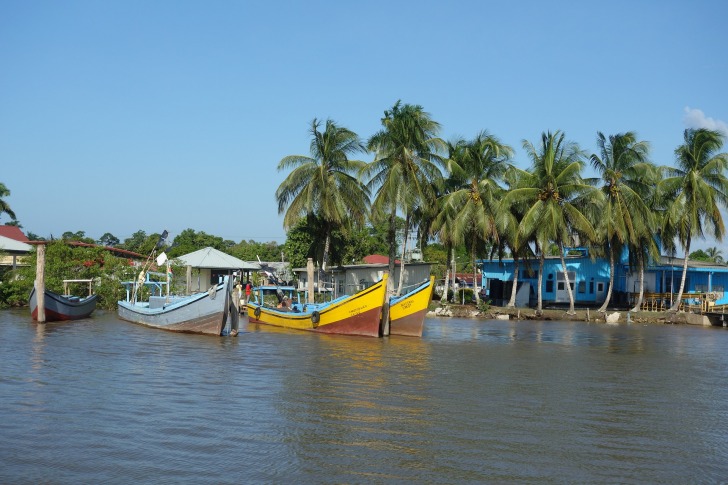

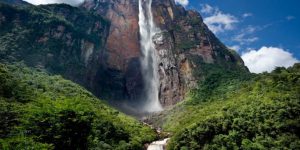
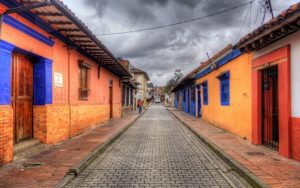
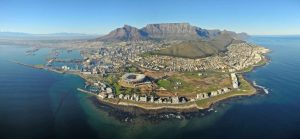
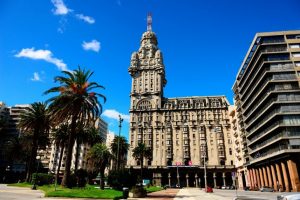
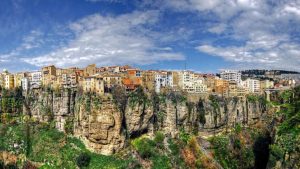

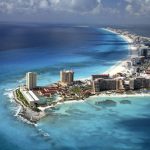
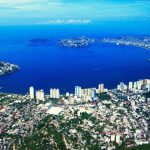
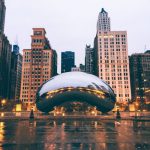
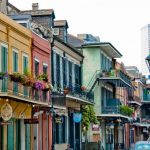
Very helpful site
I found this site very helpful. Not trying to sell me anything, just good, sound information.